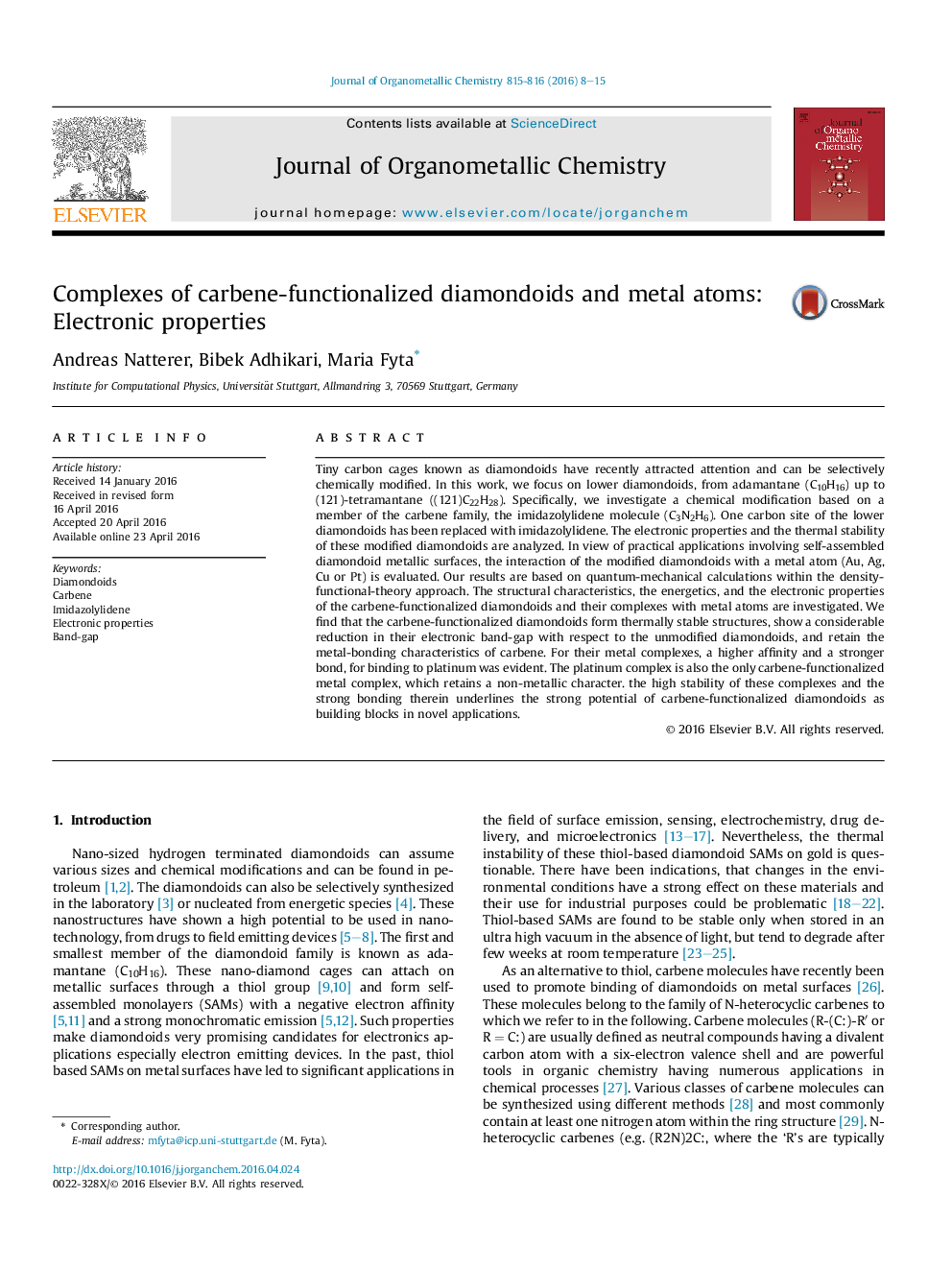| Article ID | Journal | Published Year | Pages | File Type |
|---|---|---|---|---|
| 1320494 | Journal of Organometallic Chemistry | 2016 | 8 Pages |
•Reduction of electronic band-gaps in carbene-functionalized diamondlike cages.•Carbene-functionalized diamondoids are thermally stable.•Strong binding of carbene-functionalized diamondoids to metal atoms.
Tiny carbon cages known as diamondoids have recently attracted attention and can be selectively chemically modified. In this work, we focus on lower diamondoids, from adamantane (C10H16) up to (121)-tetramantane ((121)C22H28). Specifically, we investigate a chemical modification based on a member of the carbene family, the imidazolylidene molecule (C3N2H6). One carbon site of the lower diamondoids has been replaced with imidazolylidene. The electronic properties and the thermal stability of these modified diamondoids are analyzed. In view of practical applications involving self-assembled diamondoid metallic surfaces, the interaction of the modified diamondoids with a metal atom (Au, Ag, Cu or Pt) is evaluated. Our results are based on quantum-mechanical calculations within the density-functional-theory approach. The structural characteristics, the energetics, and the electronic properties of the carbene-functionalized diamondoids and their complexes with metal atoms are investigated. We find that the carbene-functionalized diamondoids form thermally stable structures, show a considerable reduction in their electronic band-gap with respect to the unmodified diamondoids, and retain the metal-bonding characteristics of carbene. For their metal complexes, a higher affinity and a stronger bond, for binding to platinum was evident. The platinum complex is also the only carbene-functionalized metal complex, which retains a non-metallic character. the high stability of these complexes and the strong bonding therein underlines the strong potential of carbene-functionalized diamondoids as building blocks in novel applications.
Graphical abstractFigure optionsDownload full-size imageDownload as PowerPoint slide
